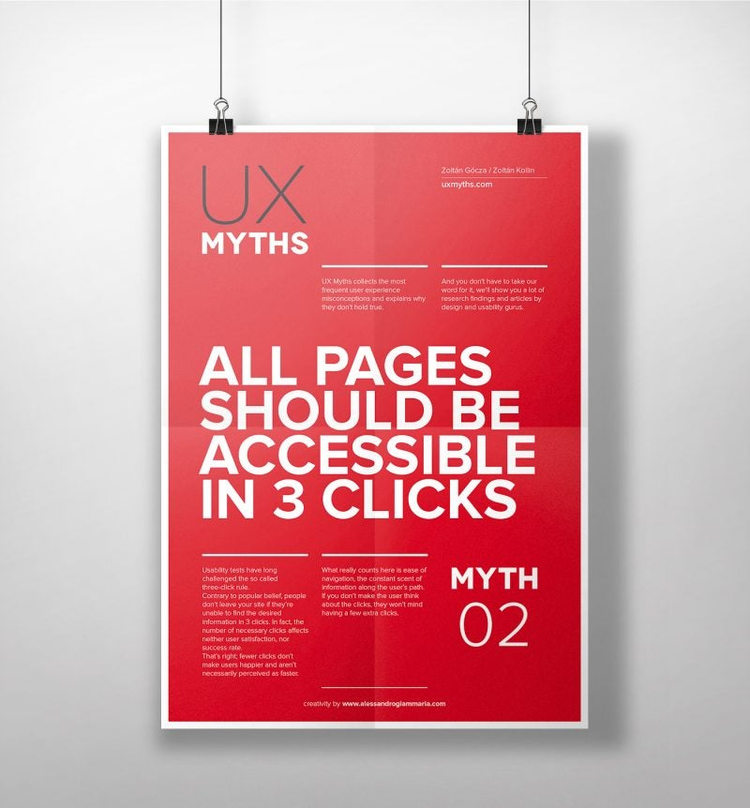Debunking Common UX Myths With The UX Mythbusters

‘Simple = minimal,” “mobile users are distracted,” “the homepage is your most important page”: these are just some of the commonly-held design principles Zoltán Gócza and Zoltán Kollin say are simply not true. The UX designers have devoted themselves to discovering and debunking UX myths, drawing on research and data to uncover which design practices and user behaviors are, and aren’t, grounded in reality. They started the website UX Myths with the goal of helping UX designers make better design decisions. We asked Zoltán Gócza to share some of those UX myths and tell us why it’s important to him to be a ‘UX mythbuster.’
You’ve dedicated yourself to good UX design. How did your career start?

http://blogs.adobe.com/creativecloud/files/2017/10/image-3-debunking-common-ux-myths-with-the.jpg
I grew up watching Star Trek, marveling at the beautiful GUIs Michael Okuda created for the series. And I possessed the magical skill of the 90’s, I could set up the time on a VCR (a feat that would have made even the first Bush administration tip its hat). So it was a straight road getting into digital products. I started working at a design agency, then moved on to product companies and later started my own startup. Working in such different settings was a humbling experience. Currently, I’m heading UX design and research at a Swiss fintech startup.
What are some of the top UX myths affecting designers right now?
Minimalism under the guise of simplicity is definitely high on the list. While simplicity is indeed a key factor for product success, it is commonly confused with extreme reduction. And that often leads to hidden complexity, introducing more friction and cognitive load. Number two, I see a renaissance of the ‘build it and they will come’ mentality that has been mostly fueled by the mobile app boom. But it’s not 2012 anymore, and even though mobile usage is still on the rise, we spend most of our time using just a handful of apps, seldom downloading new ones.

And thirdly, the craze for tiny UI details at the expense of the bigger picture, a phenomenon is also known as the dribbblisation of design. Attention to well-crafted details is of course very welcome, but putting eye-candy ahead of real design thinking can completely derail a project. The result is the plethora of beautifully executed, yet unsuccessful products. And let’s not forget about the myth that vitamin C helps you fight off cold.
And what made you decide to take these misconceptions and start the UX Myths website?
UX Myths scratches our own itch. A common theme when you work for a design agency is that you have to spend countless hours explaining the same misconceptions to your clients over and over again. We were frustrated with how inefficient this was.
So we set out to end these discussions driven by personal opinions and beliefs and to provide a reference for designers facing the same challenges.
Why is it important to you to be ‘UX Mythbusters’?
There’s the immediate impact of helping others improve and speed up design decisions, but we believe our most important goal is to convince people of the importance of evidence-based methods and the value of critical thinking. If you ask me, that’s much more important than our daily dose of UI inspiration.
The feedback we are getting from our readers also convinces us that we are onto something important here. UX Myths has received millions of visits. It has been translated into 12 languages, inspired posters, and was even published in a printed book form.
https://blog.adobe.com/media_ec4181920013633facd31e3bbe13abd7dd299537.gif
UX Myths
What harm do design myths do?
Such myths are hurtful because they are deeply ingrained and treated as dogma. We use them as shortcuts and stop asking ‘why.’ So we end up with products that miss the mark. Another pain is that designers who are well aware of these myths (the majority, I would say) often need to exert tremendous energy and spend a good amount of time ‘breaking their spells’ when working with external clients, engineers, or product owners in a cross-functional team. That takes a huge toll on any project and steals the focus from the problems you ought to be tackling.
How can UX designers make better informed, data-driven design decisions?
There are many methods and tools out there UX designers can use daily to optimize designs and make informed decisions. I believe that our profession is headed in the right direction.
That said, there are things always worth repeating:
- Be curious and learn. A day not gathering user feedback, be it an A/B test, an interview, a survey, etc, should be treated as a day wasted.
- Leave your desk and do some good old-fashioned research, talking to and observing people.
- Always have assumptions and questions you want to validate, otherwise, you’ll be wasting a lot of time.
- Document and share your findings with the whole organization—it’s energizing to see how people react to hard facts.
- And most importantly, be confident about your instincts and ideas but expect to be proven wrong. As Andy Grove said, cherish strong beliefs, weakly held.
Discover more UX myths on Zoltán Gócza and Zoltán Kollin’s website.